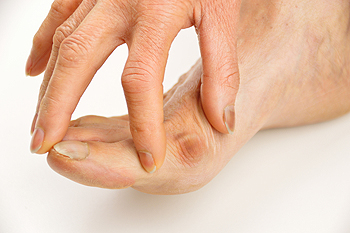Foot and Ankle Specialist
Are Bunions and Bunionettes the Same?
Monday, 12 April 2021 00:00Bunions—a very common foot disorder—are bony protrusions on the joint of the big toe, which cause it to point towards the second toe. Bunions can be very painful and are often genetic, or caused by wearing shoes that are too tight. Bunionettes, or tailor’s bunions, are a form of bunion that appears on the outside of the pinky toe. Bunions and bunionettes are painful, and can cause swelling, redness, and soreness around the joint, along with limited range of movement. Bunions that are left untreated can cause deformities or misalignments in the foot and may require surgery to correct. One of the best ways to prevent bunions and bunionettes from forming is to wear comfortable, low-heeled shoes with a rounded toe-box, which will allow plenty of room for your toes to spread out and move freely. Contact a podiatrist who can offer preventative measures against bunions, or treat them successfully if they do form.
If you are suffering from bunion pain, contact Don A. Shumway, DPM of Arizona. Our doctor can provide the care you need to keep you pain-free and on your feet.
What Is a Bunion?
Bunions are painful bony bumps that usually develop on the inside of the foot at the joint of the big toe. As the deformity increases over time, it may become painful to walk and wear shoes. Women are more likely to exacerbate existing bunions since they often wear tight, narrow shoes that shift their toes together. Bunion pain can be relieved by wearing wider shoes with enough room for the toes.
Causes
- Genetics – some people inherit feet that are more prone to bunion development
- Inflammatory Conditions - rheumatoid arthritis and polio may cause bunion development
Symptoms
- Redness and inflammation
- Pain and tenderness
- Callus or corns on the bump
- Restricted motion in the big toe
In order to diagnose your bunion, your podiatrist may ask about your medical history, symptoms, and general health. Your doctor might also order an x-ray to take a closer look at your feet. Nonsurgical treatment options include orthotics, padding, icing, changes in footwear, and medication. If nonsurgical treatments don’t alleviate your bunion pain, surgery may be necessary.
If you have any questions, please feel free to contact our office located in Snowflake, AZ . We offer the newest diagnostic and treatment technologies for all your foot care needs.
Read more about Bunions






